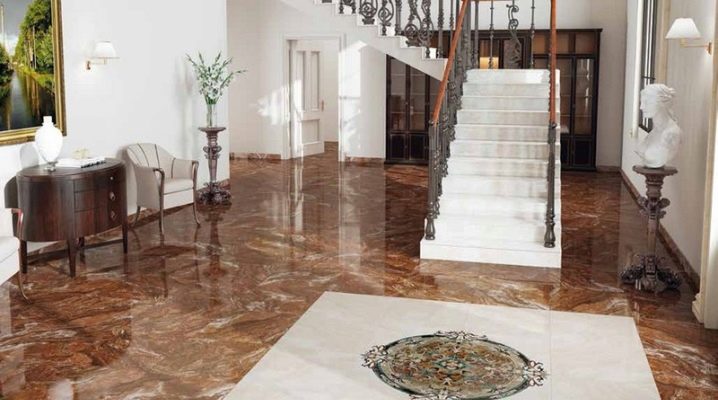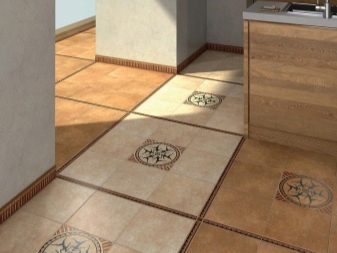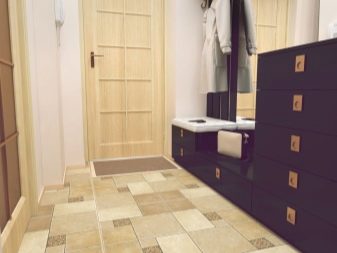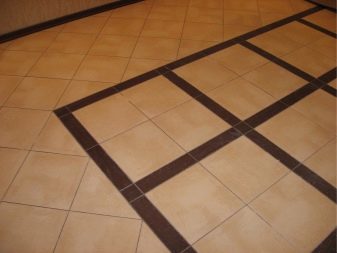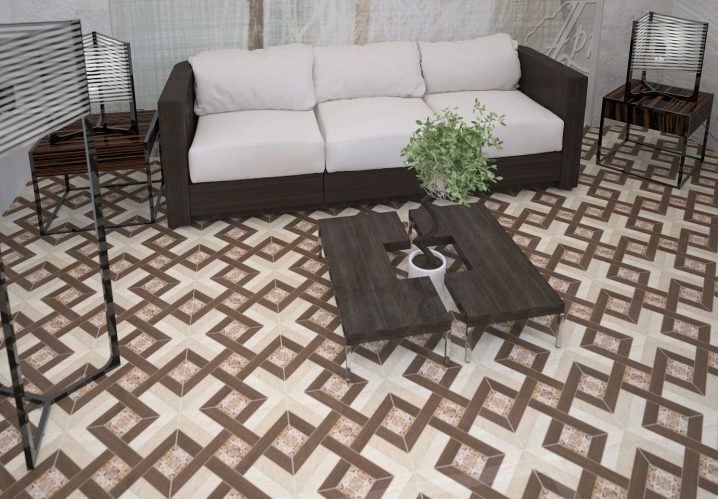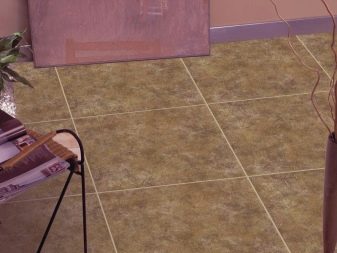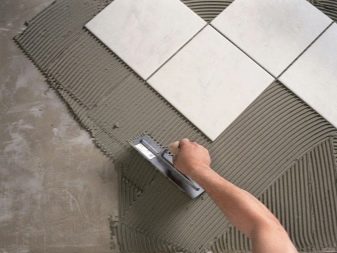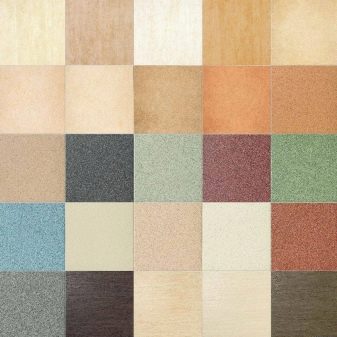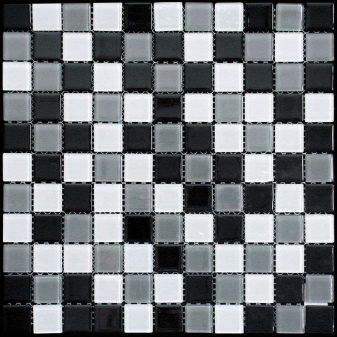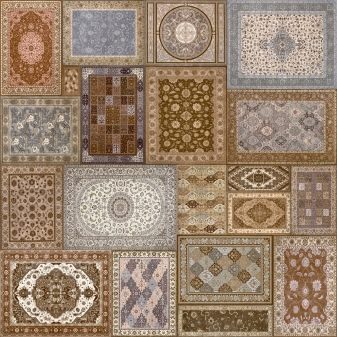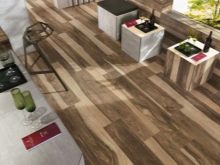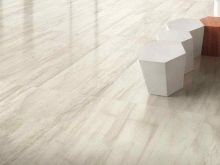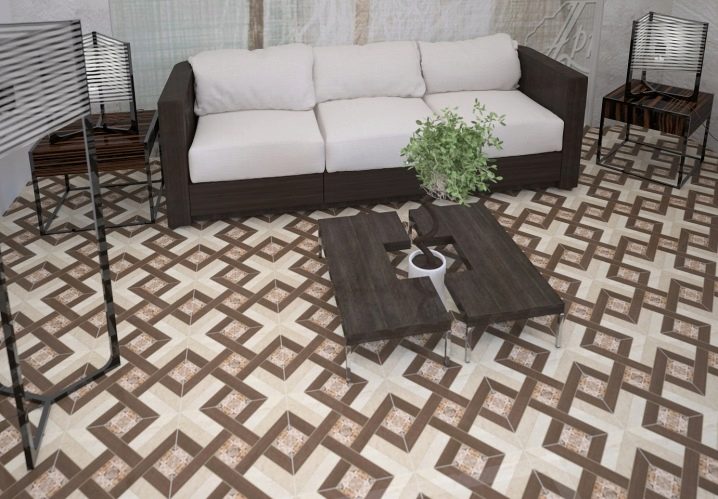Standard sizes of floor tiles
Today in the shops you can find ceramic tiles for every taste. This gives a lot of room for imagination, and also allows you to create unusual interiors in your apartment. The main thing is to make the right choice. Consider the sizes of tiles most in demand in the construction market, and what are their advantages.
What you need to know the size of the tile?
When selecting flooring for residential or other premises, be sure to calculate which tile size will suit you best.
This is especially important if you:
- You do not want to spend time adjusting individual parts of the coating to the dimensions of the room, since this is not only hard work, but also a large amount of surplus, which is unlikely to be useful to you in the future.
- Want to create a harmonious interior that does not involve cutting fragments of tiles.
- You are going to buy a panel with a complex ornament.
If you decide to entrust the repair team of workers, this moment is better to keep under personal control. After all, builders may lose sight of some of the nuances that are important to you personally.
To determine how many tiles you will need to decorate a particular room, you can use both your own calculations and a special calculator that can be found on the network. In addition, shop assistants can do this.
The latter option is even preferable, because different companies produce goods with their own characteristics. In some brands, the actual size may be 5 mm less than stated, in others - more. Even tiles from different lots are not always absolutely identical. For this reason, it is better to buy building materials of famous brands, where the probability of discrepancies is minimal. And do not forget to take a small supply in case the individual tiles are damaged during transport or laying.
It is better to estimate the position of the tile on the floor in advance to see the discrepancies. For example, if it turns out to be a little less than the declared value, then you can make small indents from each edge of the floor, so that in the end this difference is not noticeable.
Kinds
Ceramic tile
Floor tile is divided into two main categories:
- Ceramic
- Porcelain tiles.
Ceramic tiles are the most familiar to the buyer, since the market has been around for a long time. It is called tile, although tile - this is only one of the types of ceramics. Since Soviet times, such types of ceramic tiles as square 15x15 and 20x20 cm have traditionally been used. For many, this standard is still relevant. A special advantage of such dimensions is that the seams are close enough to each other. Such a floor is not so slipping, which is very important for the bathroom. At the same time to lay this type of tile can be much faster than a smaller one.
The smallest tiles are 5x5, they give a wide scope for imagination in the design of the floor. Working with them will be more laborious, but such materials will fit in well with the necessary parameters, which means that you will not have to cut the excess. The cost of such a product is not the lowest, so a panel of miniature parts will require large investments.
With so many seams, the floors will have to be carefully maintained so that they do not get dirty, and also do not lose their attractive appearance.
30 centimeter tiles can visually make the room more spacious, give it a more strict look. However, then you have to choose the least smooth textures, so that the floor does not get too slippery. For the bathroom, this variation is not suitable. You will hardly see more massive tile options, as this material is still quite fragile and can crack.
As for the shape, rectangular samples today have become no less popular than square. You can usually find models with dimensions of 10x20, 15x30, 20x40 cm. They allow you to experiment plenty, to make unusual patterns. If desired, you can find on the shelves and polygonal patterns that will help create a truly uncommon room design.
Porcelain stoneware
Now consider products made of porcelain stoneware, which in fact has no relation to the mineral - it, like ordinary tile, is made of clay. The difference lies in the production technology. Clay in the manufacture of porcelain is pressed under high pressure.
Due to the increased strength, much larger fragments of the coating are made of it - up to a meter or more. Such large tiles are rarely found in residential premises, but for office and commercial buildings this is a very popular option. Increased impact resistance, wear resistance, ease of laying made porcelain tiles the most popular coating for floors.
Under the tree
This modern type of tile is gradually conquering the consumer market. It is quite strong, aesthetic, as a rule, it has a somewhat rough surface. It is necessary to tell about it separately, as the tile under a tree differs in the dimensions from usual options. Usually, fragments have an elongated shape, for example, products with dimensions of 15x60 cm, 25x150 cm, and the like are popular. With their help, you can imitate a wooden board.
With this value, the material must be durable, and best of all with this task copes. Of course, this is a worthy alternative to wood flooring, laminate or linoleum, because, as a rule, tile is much more durable than any of these materials. At the same time, it looks more organic in the house than the variants of white, beige and any other color, gives the room coziness, but retains all its advantages.The only drawback of the floor with such a coating is that it is rather cold, not at all like wood.
To solve this problem allow modern systems "warm floor".
Thickness
Facing tiles for the floor is always more massive than that used for wall decoration. When choosing the thickness of the coating, it is necessary to take into account the ultimate loads in a given room. In an apartment or residential building, they are not so great, except for special cases, for example, very active children.
Less significant but too what matters is how much space a new floor will occupy in your home. If the ceilings are already low, then every centimeter of the height of the room will be counted. Together with the adhesive layer, which is 4-8 mm, too thick tile will be able to "lower the ceiling" a little.
It is important that the large tile is thick enough. Manufacturers themselves should take into account this point, but still when choosing a product it is worth assessing the conformity of these two characteristics. The thickness of a conventional ceramic tile often varies between 6–12 mm and porcelain stoneware — up to 30 mm, but the most popular are samples where this indicator does not exceed 10–14 mm.A variety of wood imbalance tiles usually has a thickness of 7-11 mm.
How to reduce the size?
There are cases when the choice fell on a tile that does not quite fit into the dimensions of the premises. If the integrity of the elements of the panel for you is not so important, then trimming of individual parts to the desired size is quite acceptable.
This is done in the following ways:
- With tile cutter. There are special devices that are used when working with large parts - in this case it is most convenient.
- With the help of the grinder. This is a fairly quick way to resize the finishing material for individual parameters. The only drawback is that during the work there will be a lot of dust.
- With the help of a glass cutter. To use this tool, you need to have a certain work experience, since working with it is not so convenient. In addition, for porcelain it is not suitable.
The floor tile is an excellent finishing option that combines durability, environmental friendliness and ease of maintenance. Remember that in addition to standard sizes there are others, so study the market well before you make the final choice. Also do not forget about the various ways of laying, which will help to create the most successful design option for your floor.
How to choose?
It is no secret that due to the correct selection of finishing materials, one or another effect in the design of the room can be achieved. Tiles are no exception. This is especially important in Russian apartments, which are not of large size, and what kind of tiny bathrooms and kitchens they have are everyone knows.
If your bathroom is also not too spacious, it is worth considering before choosing a miniature tile that is fashionable today for its decoration. It will visually make the space even smaller, and this will be inappropriate in this situation. But when working with large rooms, such as dining rooms or spacious kitchens, a small tile allows you to achieve excellent results. Rooms become more comfortable and pleasant to the eye. Its biggest advantage is that it allows you to hide some of the irregularities of the floor, or the imperfectly even perimeter of the room. There are cases when the floors are so crooked that it is problematic to put a large tile on them.
The big tile gives to the room more restraint, laconicism, and also will create more solid interior. It will look good in spacious rooms, and without that tight spaces will visually make it even smaller. Yes, and adjust it to such a size will not be easy.
Tile of medium size is the most running for residential premises. It has the least impact on the visual perception of the interior. Such material is always popular because it has a relatively low price, but it can withstand high loads.
The secrets of choosing ceramic tiles on the floor can be viewed in the next video.
